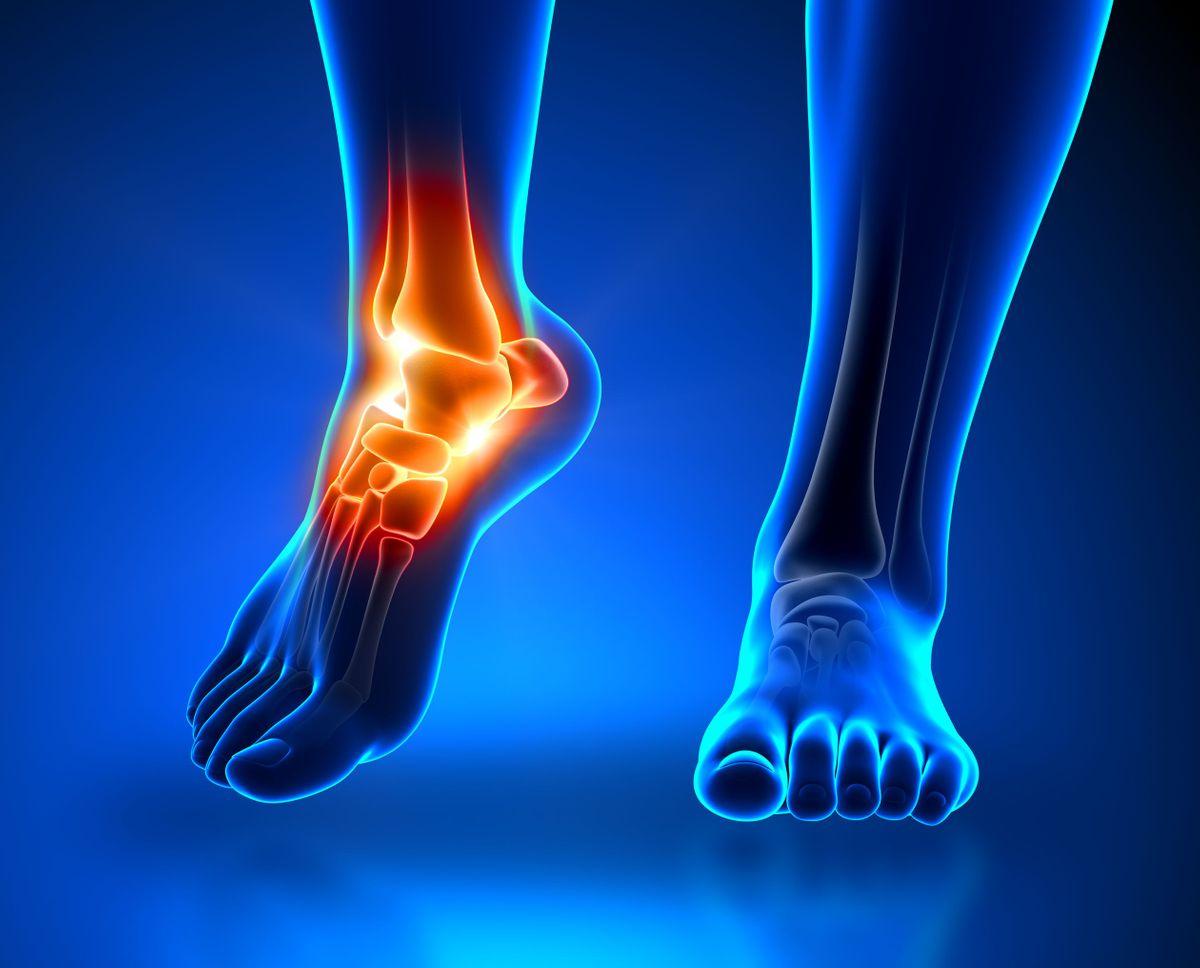GOUT
Gout is sometimes referred to as the “disease of kings” because it long has been associated incorrectly with the kind of overindulgence in food and wine only the rich and powerful could afford. In fact, anyone can be affected, and the risk factors are varied. Fortunately, it is possible to treat gout and reduce its agonizing attacks by avoiding food triggers and taking advantage of medication options.
What is gout?
GOUT is a painful and potentially disabling form of arthritis that has been recognized since ancient times. Initial symptoms usually consist of intense episodes of painful swelling in single joints, most often in the feet (especially the big toe). Treatments are now available to control most cases of gout, but diagnosing this disorder can be difficult, and treatment plans often have to be tailored for each person.
What causes gout??
Gout occurs when excess uric acid (a normal waste product) accumulates in the body, and needle-like crystals deposit in the joints. This may happen because either uric acid production increases or, more often, the kidneys are unable to remove uric acid from the body adequately. Certain foods, such as shellfish and alcohol, may increase uric acid levels and lead to gout attacks.
Some medications also can increase uric acid levels. Examples of such medications include moderate-dose aspirin (81 mg used for prevention of heart attack and stroke has minimal effect and can generally be continued), diuretics such as hydrochlorothiazide and immunosuppressants used in organ transplantation such as cyclosporine (Neoral, ) and tacrolimus (Prograf).
With time, increased uric acid levels in the blood may lead to deposits of monosodium urate crystals in and around the joints. These crystals can attract white blood cells, leading to severe, painful gout attacks. Uric acid also can deposit in the urinary tract, causing kidney stones.
Who gets gout?
Gout afflicts up to 3 million Americans. This condition and its complications occur more often in men, women after menopause, and people with kidney disease. Gout is strongly associated with obesity, hypertension, hyperlipidemia and diabetes. Because of genetic factors, gout tends to run in some families.
How is gout diagnosed?
Several other kinds of arthritis can mimic gout, so proper diagnosis is essential. Gout is suspected when a patient experiences joint swelling and intense pain initially in one or two joints followed, at least at first, by pain-free periods between attacks. Initial gout attacks often occur at night.
A definite diagnosis depends on finding the characteristic crystals. The physician will use a needle to extract fluid from an affected joint and examine that fluid under a microscope to determine whether monosodium urate crystals are present. Crystals also can be found in deposits under the skin (called tophi) that occur in advanced gout. Uric acid levels in the blood are important to measure but can be misleading, as these may be temporarily normal or even low during attacks. Uric acid levels often are elevated in people who do not have gout.
How is gout treated?
One treatment for acute gout is colchicine, which can be effective if given early in the attack. Non-steroidal anti-inflammatory drugs (NSAIDs) are aspirin-like medications that can decrease inflammation as well as pain in joints and other tissues. NSAIDs—such as indomethacin (Indocin) and naproxen (Naprosyn)—have become the treatment choice for most acute attacks of gout. There is no evidence that any one NSAID is better than others. High doses of short-acting NSAIDs provide fastest relief of symptoms.Corticosteroids are important options in patients who cannot take NSAIDs or colchicine. Resting the affected joint and applying cold compresses to the area also may help alleviate pain.
Efforts to normalize blood uric acid levels should be considered for patients who have repeated gout attacks, unusually high levels of serum uric acid, or tophi or kidney stones. These medications do not help the painful flares of acute gout and should be started after acute attacks have subsided. Probenecid (Benemid) helps the kidneys eliminate uric acid. This is used only in patients with good general kidney function who are not overproducers of uric acid. Allopurinol (Lopurin, Zyloprim) blocks production of uric acid and is most often the agent selected to normalize blood levels. Febuxostat (Uloric) also acts by blocking production of uric acid and is a recent alternative. Flares of gout often can occur during use of urate lowering agents so efforts at prevention of flares by use of low-dose colchicine are advised. Additional new agents to normalize uric acid levels are under development.
Drinking alcohol should be reduced or stopped. Diets that restrict foods rich in the purines found in meat and certain types of seafood or high-fructose beverages may help. Purines in vegetables appear to be safe, and low-fat dairy products may actually help lower uric acid levels. In almost all cases, it is possible to successfully treat gout so that the patient experiences a gradual end to attacks, and decreases in the number and size of tophi.
Living with gout
Gout affects quality of life both by the episodic attacks and potential for chronic arthritis. Compliance with medical regimens is critical. Lifestyle changes may make it easier to manage this lifetime disease. Suggestions include gradual weight loss, avoidance of alcohol and, reduced consumption of fructose-containing beverages and foods and foods high in purines.
The Rheumatologist's role in the treatment of gout
The treatment of gout can be complicated by coexisting medical conditions and other medications. As experts in the treatment of arthritis, rheumatologists evaluate patients to determine whether gout is the cause of their arthritis, educate them about the role and proper use of medications as well as other treatment measures, and act as a resource to primary care physicians.
Points to remember
- Gout can be suspected by the typical episodic arthritis and diagnosed accurately by identifying the characteristic crystals in the fluid in joints.
- There are two types of treatment for gout: medications to control the attacks of joint pain such as NSAIDs, colchicine and corticosteroids, and medications used after attacks have resolved that can lower the level of uric acid in the body over time so the attacks occur less frequently or not at all.
- People with chronic gout often require lifetime treatment with drugs to lower uric acid levels.
- Lifestyle changes such as controlling weight, limiting alcohol consumption, and limiting meals with meats and fish rich in purines also can be helpful in controlling gout.
For more information
The American College of Rheumatology has compiled this list to give you a starting point for your own additional research. The ACR does not endorse or maintain these Websites, and is not responsible for any information or claims provided on them. It is always best to talk with your rheumatologist for more information and before making
any decisions about your care. The Arthritis Foundation www.arthritis.org
National Institute of Arthritis and Musculoskeletal and Skin
Diseases Information Clearinghouse
Updated June 2008
Written by Eric Ruderman, MD and Siddharth Tambar, MD, and reviewed by the American College of
Rheumatology Patient Education Task Force.
This patient fact sheet is provided for general education only. Individuals should consult a qualified health care provider for professional medical advice, diagnosis and treatment of a medical or health condition.

